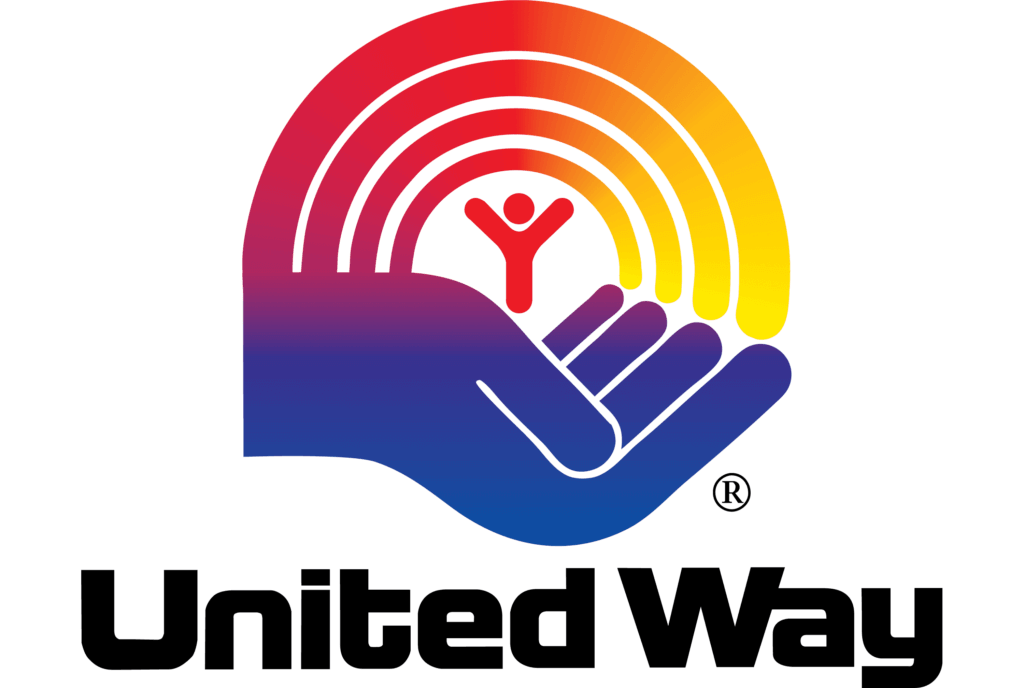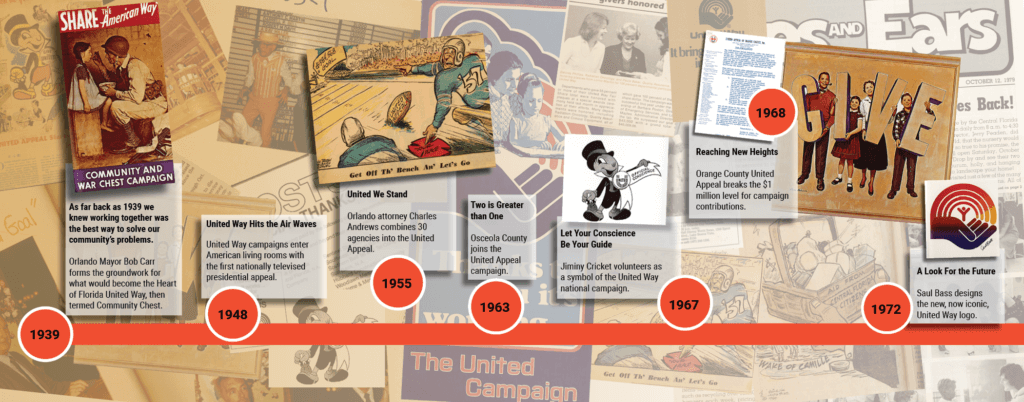In honor of 85 years of impact here at Heart of Florida United Way, we are revisiting the history and milestones that led our organization to where we are today. While we technically became United Way in 1970, our organization’s roots date back much further – back to the early 1900s!
United Way: A Brief History
Did you know our organization was not always referred to as “United Way.” As early as 1900, four clergymen in Denver recognized serious social issues in their community, which they sought to combat by creating an Associated Charities Organization. This organization would function to raise funds for 22 different agencies that worked to solve various social issues in their area.
Sound familiar? The idea of one group raising funds for a variety of agencies caught on quickly, and by 1911 there were over 120 similar organizations in the country.
Our own local roots reach back to 1939, when Orlando Mayor Bob Carr formed the groundwork for what would eventually become Heart of Florida United Way, then termed a Community Chest. By this time, Cleveland had expanded the associated charities concept and changed the name to a Community Chest, and hundreds of areas like ours followed suit.

These Community Chest organizations continued to change and unite with other local charities in their respective areas, eventually becoming known across the country as the United Fund. After World War II, the United Fund honed in their focus on single workplace campaigns, which would remain a main pillar of the organization’s fundraising for decades to come. Cities like Detroit created a federated campaign and even included many national agencies. Tampa adopted its first United Fund in 1956, and we at HFUW have records of United Fund campaigns from the late 50s – our 1958 United Appeal campaign raised over $380,000, which equates to over $4 million in today’s currency.
By 1968, United Appeal raised over $1 million in campaign contributions. However, despite this fundraising concept spreading across the nation, the name wasn’t quite sticking. Different organizations called their funds different names. At HFUW, we called ourselves a United Appeal rather than a United Fund, and there was little to no consistency in branding across the country. Leaders wondered whether this was hurting the organizations and sought consistency.
In 1970, we finally got a new, consistent name: United Way of America.
Becoming United Way of America
Enter legendary graphic designer Saul Bass, who gave the newly named United Way of America its own visual identity. Known for his iconic work on logos like AT&T, Kleenex, and Girl Scouts, Saul used simple, geometric shapes to give a strong identity to his works. He designed title sequences for many classic films, including “West Side Story,” “North by Northwest,” and “Psycho.”
According to United Way of Greenville County, Saul designed the United Way logo to “convey United Way as a contemporary organization, sensitive to the changing needs of our society.” The logo contained three main elements:
- The Helping Hand: “Symbolizes the services and programs supported by United Way.”
- The Rainbow: “A blending of human diversity, creates harmony and unity of purpose. [It] springs from the helping hand, representing the hope of a better life possible through United Way.”
- The Person: “The symbol of mankind, is cradled by the helping hand. It shows that all people are uplifted by United Way.”

Saul’s original design was launched in 1972 and remained in use by United Way until 2004, when it was modernized.
Locally, our United Way campaigns continued to grow through the 1970s, with our campaign in 1979 raising over $3 million for Orange, Osceola, and Seminole Counties. We were already developing relationships with key partners in the community at this time, with special service awards given to the U.S. Navy, Walt Disney World, the Bell System, and Martin Marietta for service to United Way. Companies were also recognized for high percentages of employees participating in the campaign, with the taglines “Give your fair share” and “Because of you, it works for all of us” used in campaign ads and materials through the 70s.
With a new visual identity, a growing yearly campaign, and strong community partners, the 70s set up United Way for continued growth in the coming decades. Our impact was just beginning.

Sources:









